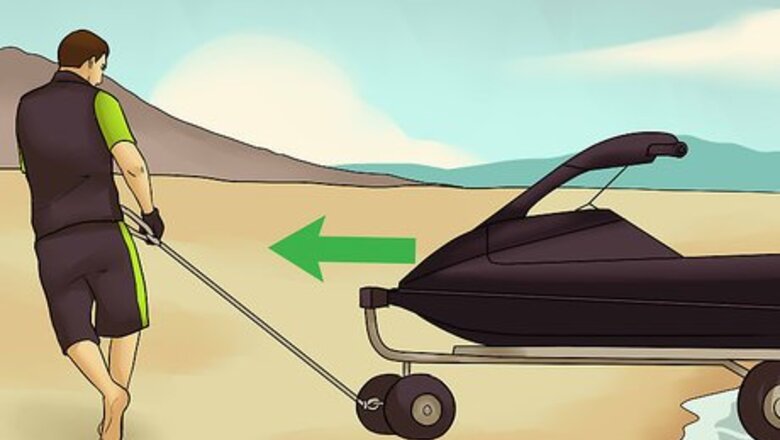
views
Draining Your Jet Ski
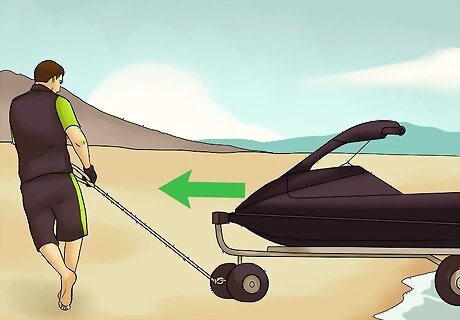
Remove your jet ski from the water. When you're done with the last ride of the season, get your jet ski out of the water as soon as possible. With your trailer securely attached to the back of your vehicle, slowly back your vehicle down the ramp until most of the trailer is underwater. Then get onto your jet ski, drive it up onto the trailer, and hook it to the trailer. Get back into your vehicle and slowly drive forward to safely remove the jet ski from the water. If possible, have a friend assist you with this so that one of you can drive the vehicle and the other can drive the jet ski.

Reposition the jet ski for draining. The bow (front) needs to be higher than the stern (rear) of your jet ski so it can be drained properly. Secure your jet ski on the trailer so that the back of it is lower than the front.
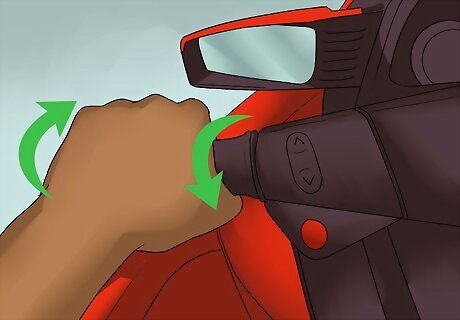
Turn the throttle back and forth to drain the water. Turn the jet ski on and alternate between moving the throttle back and forth in short bursts. Do this in 30 second intervals to prevent overheating. Continue this until water is no longer being expelled from the jet ski.
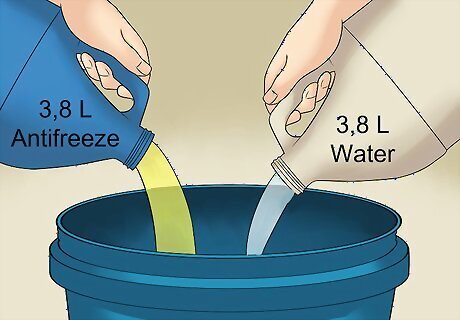
Mix water and antifreeze in a bucket. Use RV antifreeze only! It is much less harmful to the environment. Do not use regular automotive antifreeze. The antifreeze will prevent any fluids from freezing in the exhaust system while the jet ski is stored. Mix one gallon (3.8 L) of RV antifreeze and one gallon (3.8 L) of water in a five gallon (18.9 L) bucket.
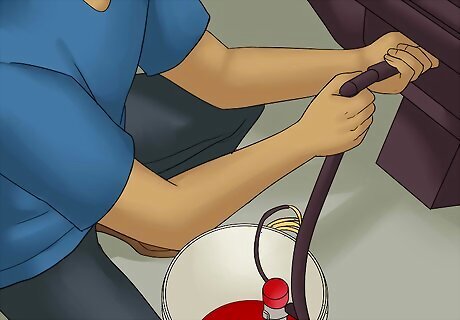
Flush the mixture through the exhaust system. Hook a hose or water pump up to the flush outlet while keeping the other end submerged in the antifreeze mixture. Turn the engine on and off once the entire mixture has gone through the exhaust system.
Cleaning, Gassing Up, and Lubricating Your Jet Ski
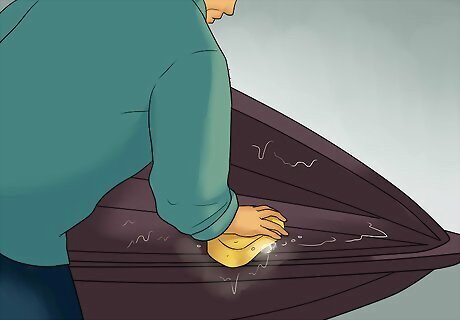
Wash the exterior with car safe soap. Fill a bucket with warm water and add in a few squirts of car safe soap. Soak a scratch-free cloth in the soapy water and wipe down the exterior of your jet ski with it. Pay close attention to the bottom of the jet ski, where algae and slime tend to accumulate. Don't use dishwashing liquid or hand soap.

Rinse and dry your jet ski. Thoroughly rinse off your jet ski with clean water. You can do this with a hose or by filling and dumping buckets of water onto the jet ski. Afterwards, let the jet ski air dry completely. If you want to, you can then use a high-shine protectant car wax to buff and shine your jet ski.
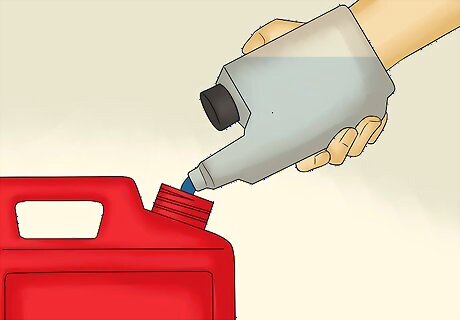
Put stabilizer in your gas tank. Get a bottle of fuel stabilizer and add it to your gas tank as the product label instructs. This will prevent fuel contamination and will also keep residue from building up in the carburetor, fuel injection system, and gas lines.
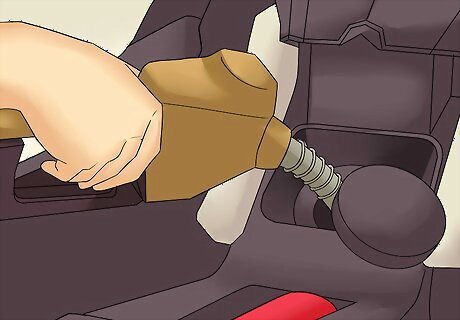
Fill up your tank with gas. After putting the stabilizer in, top off your gas tank with premium gas. This will prevent condensation from forming on the inside of the gas tank.
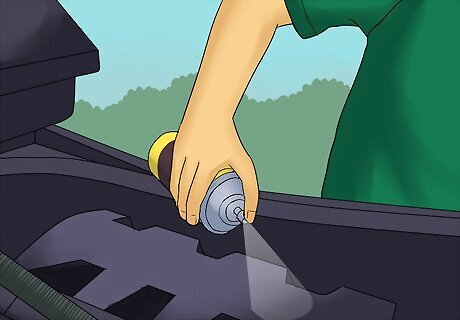
Lubricate your jet ski's moving parts. Spray lubricant on the areas of your jet ski that are often rotating and turning. Some of these areas include the steering nozzle pivot points, the reverse mechanisms, and the brake mechanisms. It's also a good idea to spray the engine as well as the electrical components to rid them of any traces of water.
Storing Your Jet Ski
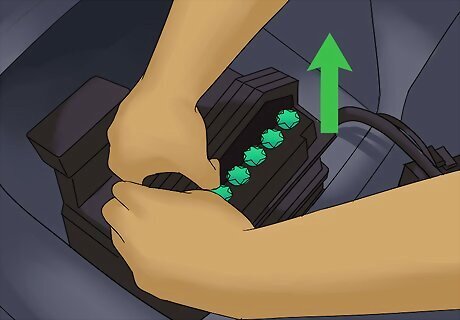
Remove the battery. Batteries lose their charge over time, so it's necessary to remove the battery from your jet ski and charge it while your jet ski is stored. First disconnect the negative terminal and then disconnect the positive terminal.
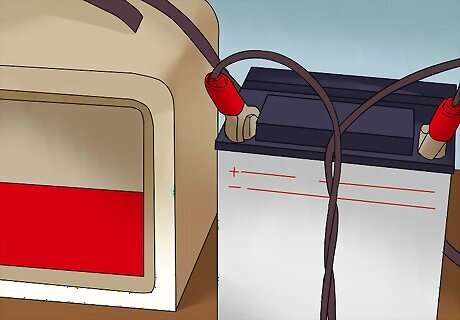
Charge the battery. Attach the battery to an automatic battery charger. Make sure to do this on a secure surface that's away from anything flammable. Also be sure to charge the battery in a location where the temperature won't drop below freezing.

Store your jet ski in a secure garage. It's ideal to store your jet ski on its trailer in a garage, but you can also store it in a shed, a barn, or outside. Remove the tires from the trailer or put blocks of wood underneath them to prevent dry rot and corrosion. Remember to keep your jet ski stored away from any flammable substances, since it's full of gas.

Cover your jet ski. Either cover your jet ski with a tarp or cover to keep it protected. Also plug the exhaust outlets and air intakes with rags to keep rodents from getting inside the jet ski. If you store your jet ski in a shed, a barn, or outside, it's important to protect the jet ski a little more. Cover it with a second tarp or cover.













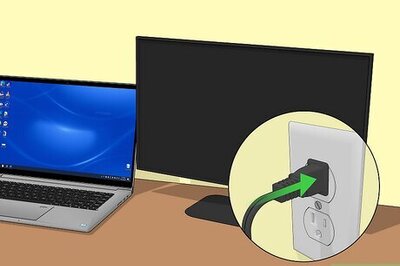




Comments
0 comment